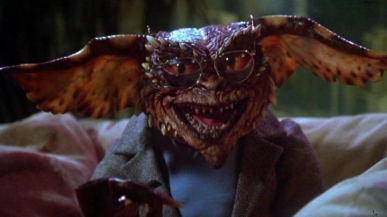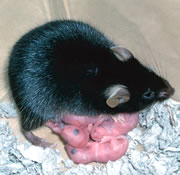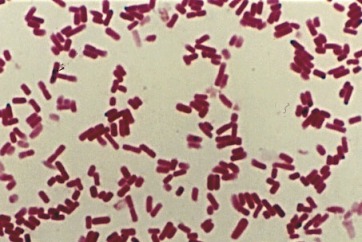Happy Monday, everyone!
It’s been a while since I’ve written anything here, as I’ve been pretty damn busy of late. I’ve written a couple of articles for different websites and have given a presentation, which I’ll be writing up into a blog post for later on in the week. Plus I’ve had to do a little something called a PhD! But here we are and it’s time for the long-overdue final instalment on Gremlins and Mogwai.
Given how long it’s been since I started this (I’ve had something of a mental block), I’d advise heading to Part 1 and Part 2 for a quick recap on what these posts are about….
…*twiddles thumbs; makes cup of tea….thinks about PhD work and adds whisky…*
All done?
Right then. Let’s get cracking with a reminder of the final rule for keeping a Gremlin or Mogwai. Enjoy!
Rule 3: Never get them wet
If a Mogwai or Gremlin gets wet then it will spontaneously spawn offspring, which pop out of its back.

The best Gremlin in the films – the Brain Gremlin (Photo Credit: Warner Bros/Amblin Entertainment & ‘spongebob.wiki’)
Given that there is no sexual intercourse involved here (unless something happened off-camera that we really don’t want to know about), it’s safe to say that Mogwai/Gremlins are asexual. So far so obvious I hear you say; but now we need to look at what type of asexual reproduction they undergo. It turns out there are quite a few types, but only two of them are seen in the animal kingdom. They are known as ‘Fragmentation’ and ‘Parthenogenesis’.
In the former, new organisms grow from a piece, or fragment, that has broken off from the parent organism. You know when you take a cutting of a plant and give it to someone else to grow in their garden? That’s artificial fragmentation and your friend’s plant will have the same genetic material as yours. However, outside of plants and fungi, this is obviously only a feasible method of reproduction in relatively simple animals like worms and starfish. It certainly wouldn’t be possible in something as complex as the mammalian Mogwai and reptilian Gremlins.
That leaves us with Parthenogenesis. In this case, females’ eggs can develop into embryos without needing to be fertilised. This is certainly seen in many different animals, including some sharks, insects and reptilian species, such as the Komodo Dragon. However, I came to the conclusion in Part 1 that Mogwai/Gremlins are mammals, so can a mammal reproduce through parthenogenesis? The answer is….sort of.
No mammal reproduces in this way naturally. However, in 2004, a Japanese research group did manage to produce a mouse from two mothers, with no sperm involved. The offspring, named Kaguya, even went on to have her own children…in a more conventional manner! The research group concluded that, at least in mice, fathers’ genetic material prevented parthenogenesis occurring naturally so as to ensure the need for males. Now, I’m feeling in a forgiving mood as I write this. Despite the fact that parthenogenesis doesn’t occur naturally in mammals, I’d say it’s a reasonably realistic explanation for how Gremlins reproduce. After all, they’re not your typical mammal! So, score one for realism!
Now let’s deal with this business about ‘spontaneously’ spawning offspring. If you haven’t seen the films, this video shows what happens when you get a Mogwai wet. Basically Mogwai and Gremlins that get wet immediately start shaking, at which point fur balls or sacks, respectively, pop out of their backs. These then grow quickly into full-sized Mogwai or Gremlins, depending on which made them. The whole thing takes about 1 minute.
If we ignore the ridiculous idea that dropping water on an animal that is 90% water would cause it to reproduce, just how realistic is this reproduction time? To answer this, let’s have a look at a few records in the field of reproduction.
The organism with the fastest known reproduction time is the bacterium Clostridium perfringens (if we don’t count viruses as living organisms…ooh future post idea!). This single-celled organism is found pretty much everywhere and is a leading cause of food poisoning. It reproduces asexually, with a new cell budding off from the parent in just 10 minutes.
Now, given that C. perfringens is a unicellular organism, you’d expect it to be able to reproduce much faster than a complex organism like a Mogwai or Gremlin. Its method of reproduction – binary fission – isn’t burdened by the need for embryonic development either, so doesn’t take up as much time. As such, the idea that a mammalian creature could produce fully grown offspring in less than a minute is, I’m afraid to say, a figment of the imagination. To put it into perspective, the title of the shortest known gestation period for a mammal belongs to the Short Nosed Bandicoot. It pops out its sprogs (note, not a technical term) after just 12 days!
And that, as they say, is that. Over these 3 posts we’ve had a look at a fair range of biological processes and phenomena that Mogwai and Gremlins seem to demonstrate in the films. Hopefully you’ve enjoyed reading about them and learned a bit more about the world too – I certainly have! So, what’s the overall verdict? Are Gremlins realistic or not? I’ll answer by leaving you with the final scores – there are 2 points for each post: 1 for realism of the rule and 1 for realism of the sub-topic discussed. Till the next time!
Possible: 3 Not possible: 3
It’s a draw! So…erm…I guess they’re sort of scientifically possible but not quite… I was hoping for a clean outcome there…bugger!


Sazzy
August 21, 2013 at 11:09 AM
Congratulations sir, you have met the challenge admirably. Although I admit I do question the tag of silly science – surely if your blog is called Science Gremlin you need to write about science and Gremlins. Not silly at all 😛 Is the short nosed bandicoot any relation to Crash?
I believe I now owe you cake.
Science Gremlin
August 26, 2013 at 9:54 AM
Huzzah! Ah I’d forgotten about the cake offering! You certainly don’t have to but I’m not going to turn down cake if it’s forced upon me 😛 And you’re quite right – the tag is an oversight on my part lol!
And I like to think maybe it is related to Crash…next blog post: Just how scientifically possible is Crash Bandicoot! 😉
Kenna Corn
November 12, 2013 at 9:26 PM
I wish that mogwai were real.
I would follow the three rules.
I would also have some one to play with if I get bored. :0)
Science Gremlin
November 12, 2013 at 9:58 PM
Haha, I’d love it if they were real too! Not sure how bad they’d smell after a while if you can’t wash them though – maybe they wouldn’t be the best pets!